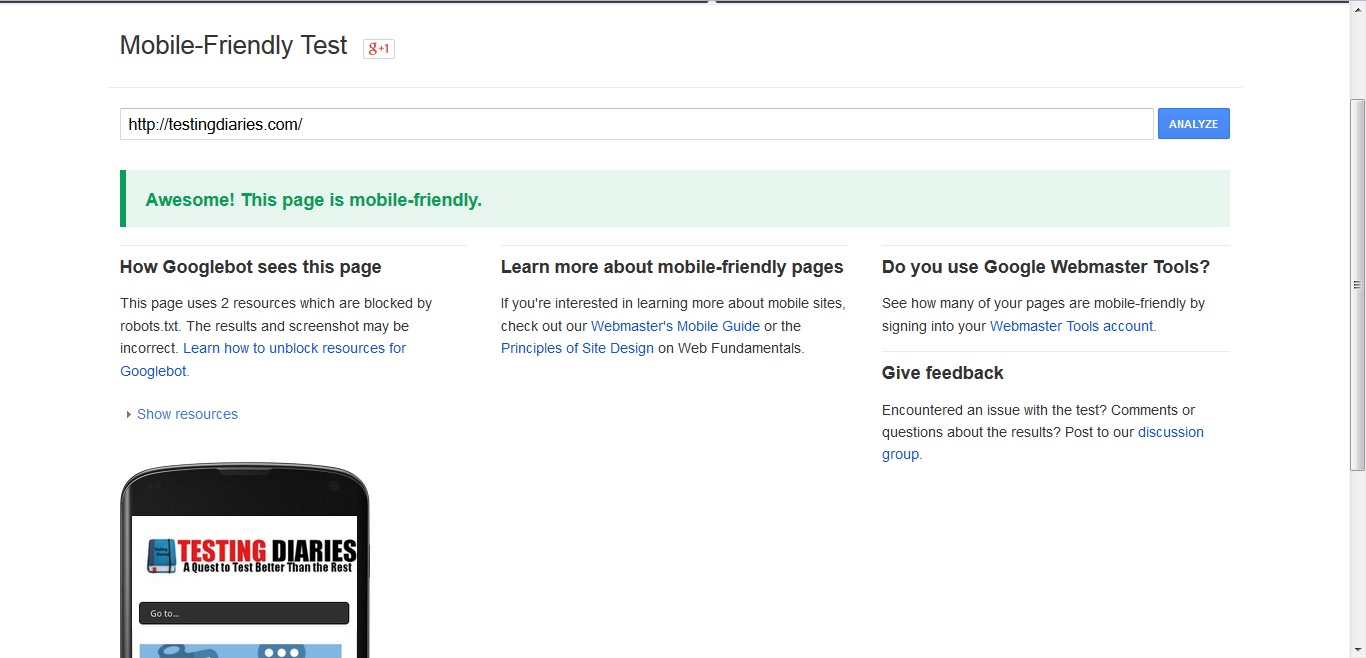Some times back, Google announced the launch of a new label which will show if a website is mobile friendly or not. As big part of site traffic comes from mobile devices nowadays, a software tester should consider site’s mobile friendliness as an important criteria.
Therefore to facilitate a quick check of website’s mobile readiness, Google has also made available a tool which testers may find very useful. This tool is called Mobile-Friendly Test. Simply provide your site’s URL and click Analyze button. It will show if your website is mobile friendly. Here is a report of Testing Diaries.

Along the way, it also shows various other details such as ‘How Googlebot sees this page’, tips for mobile-friendliness etc.
All in all, a great tool to quickly check the mobile readiness of your website. If you know any more such tools, share with us in comments.
Comments
Post a Comment